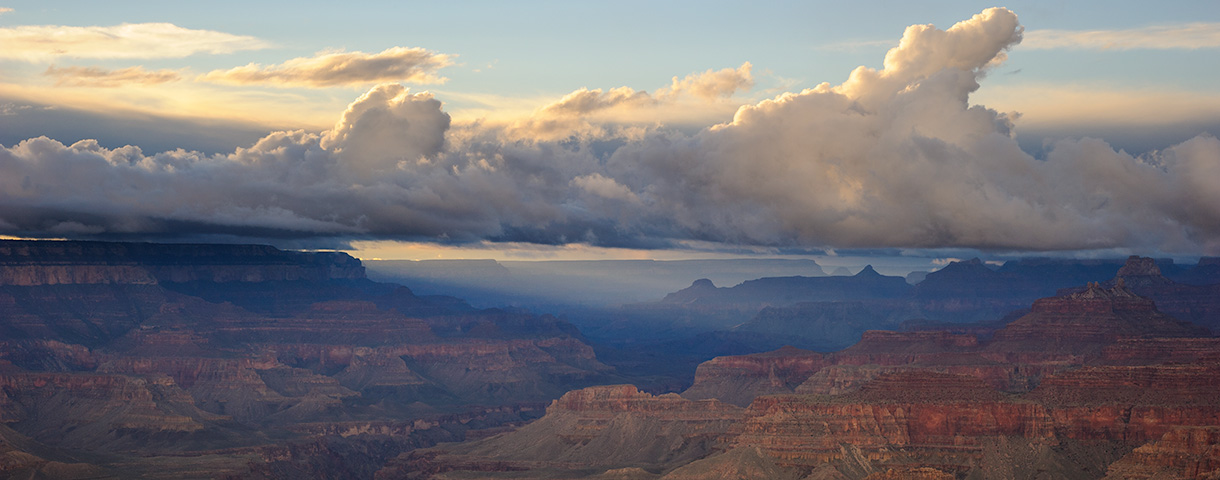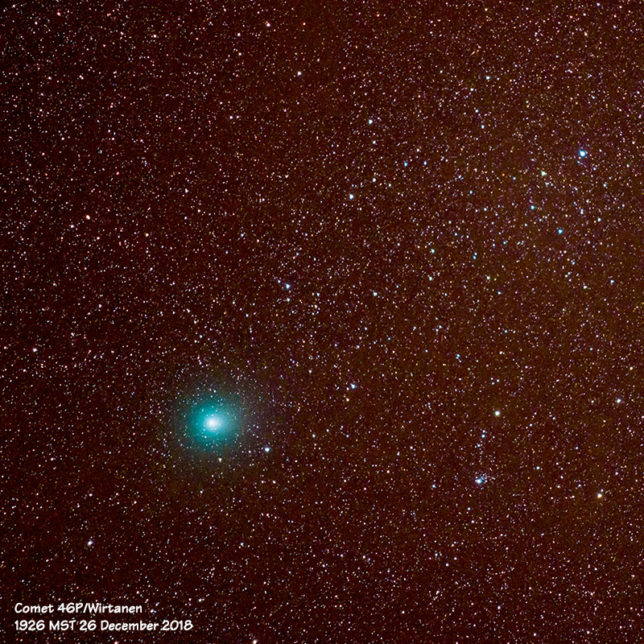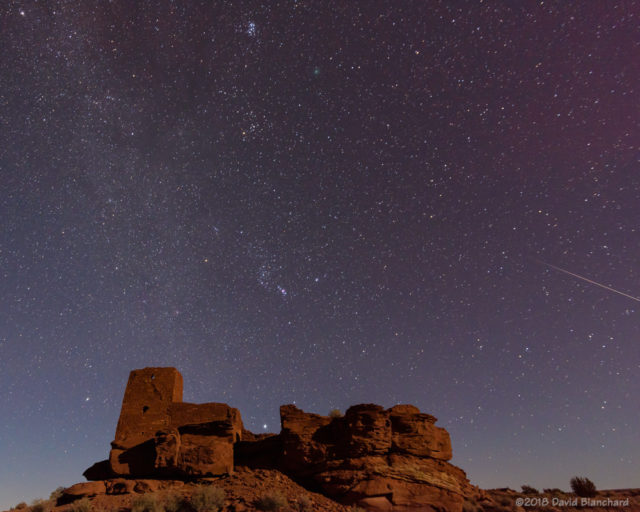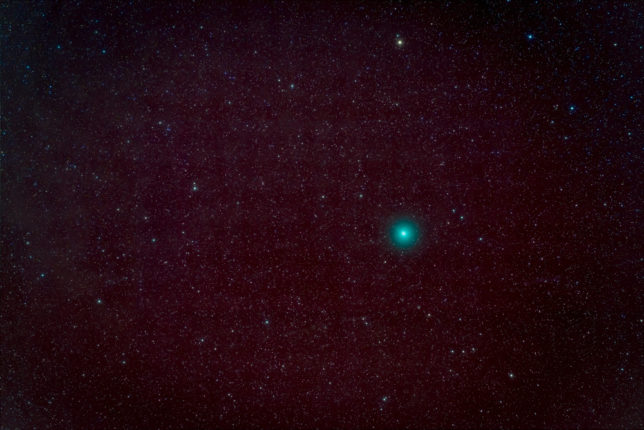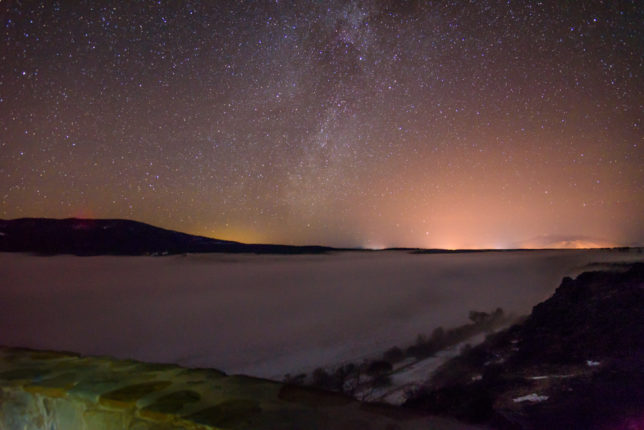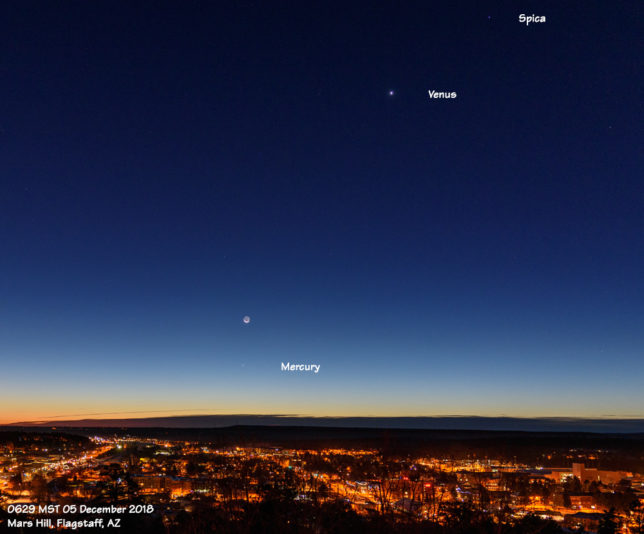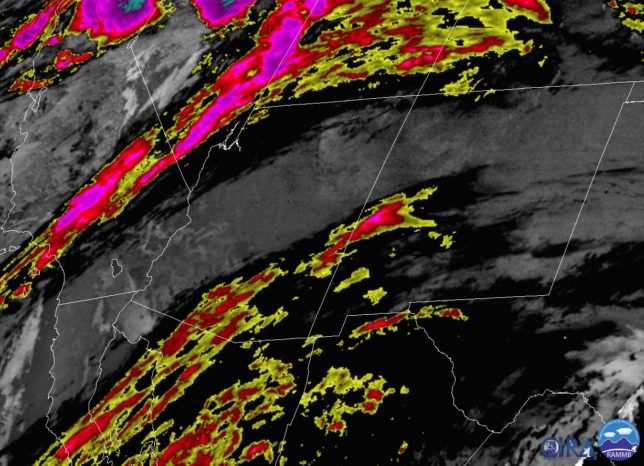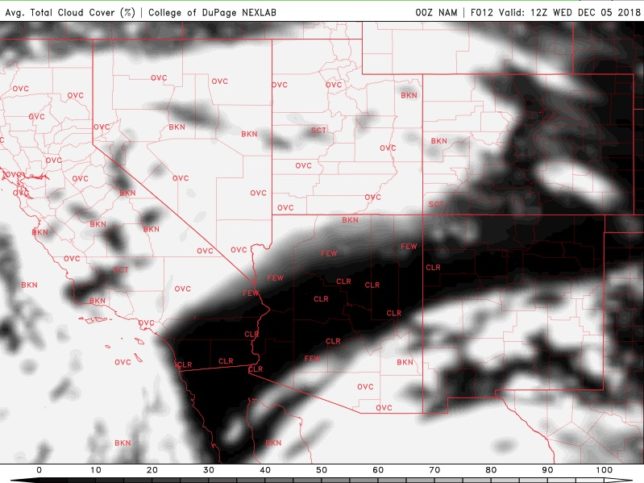A very cold storm system moved across the southwestern states on the last day of 2018 bringing snow to both the usual locations but in the lower elevations and the desert as well.
I awoke before dawn on New Years Day and was greeted with clear skies and a crescent Moon with the planets Venus and Jupiter shining brightly in the eastern sky. I drove out towards Mormon Lake anticipating great—albeit very cold—conditions for some sunrise snow photographs. On the way to the lake I encountered low clouds and patchy fog and there was nothing to be seen upon my arrival. It was already too close to sunrise to head back north or west so my only option was to wait and hope.
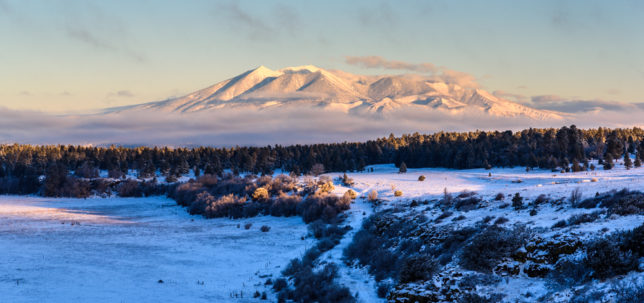
I missed the sunrise but about 20 to 30 minutes later the clouds cleared and the San Francisco Peaks were amazing. Low clouds and fog remained around the base of the peaks.
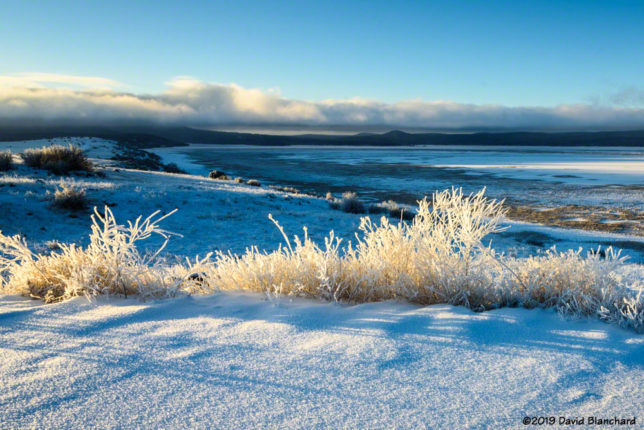
As the sun rose higher the side-lit rime ice on the wild grasses (i.e., weeds) at the Mormon Lake Overlook began to glisten and glow.
Temperatures were hovering in the low single digits and I was cold after standing around for about an hour. Time for breakfast and hot coffee.
The next day we hiked into West Fork Oak Creek knowing that the trail would be snow packed and there would be a dozen water crossings on ice—hopefully solid enough to support us. After several days of below freezing high temperatures and near or sub-zero overnight temperatures we were hopeful for safe ice.
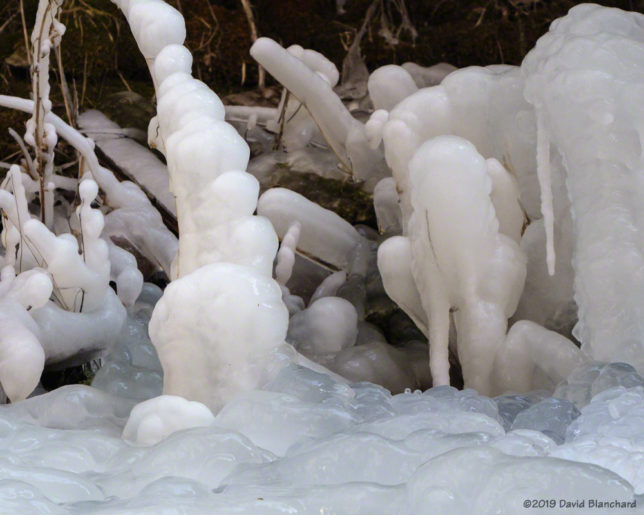

We hiked to the “end” of the trail where it enters a narrow, rock-walled section of canyon often called “The Subway.” This was our turnaround spot.
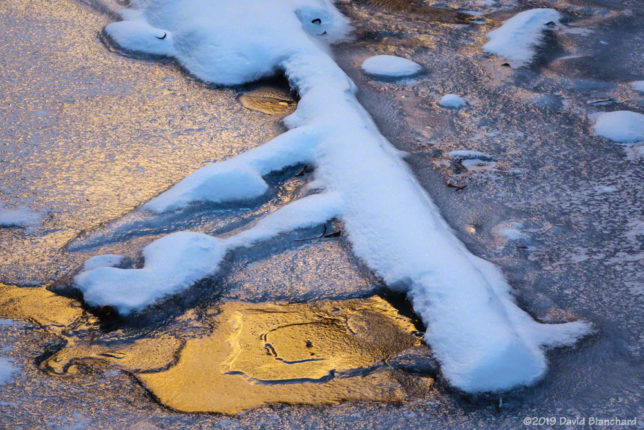
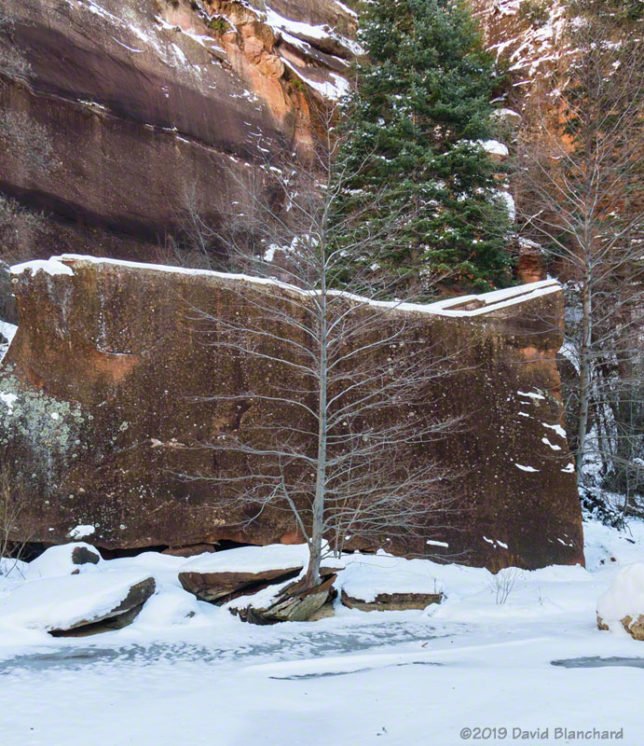
On the way up the canyon we had not run into any other hikers. What a treat!
